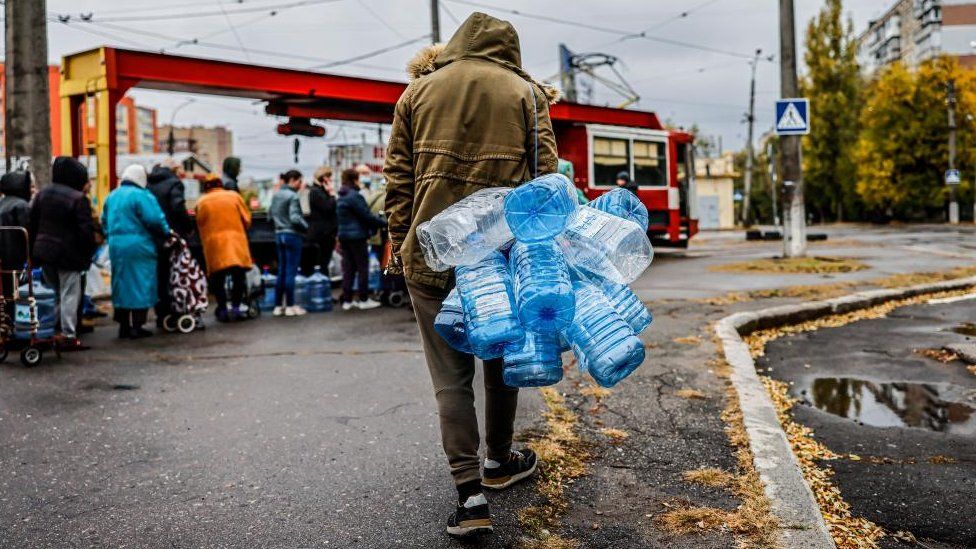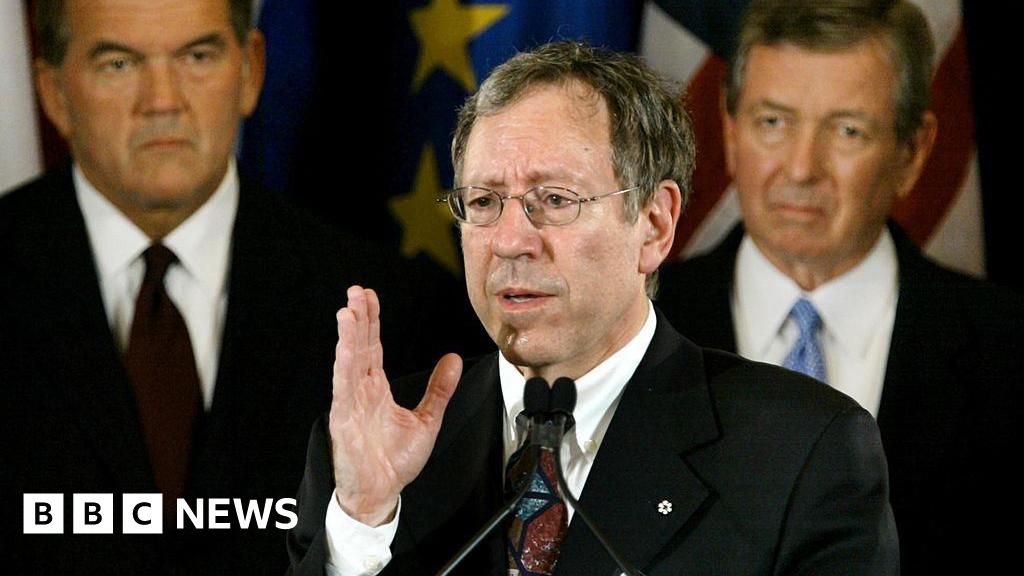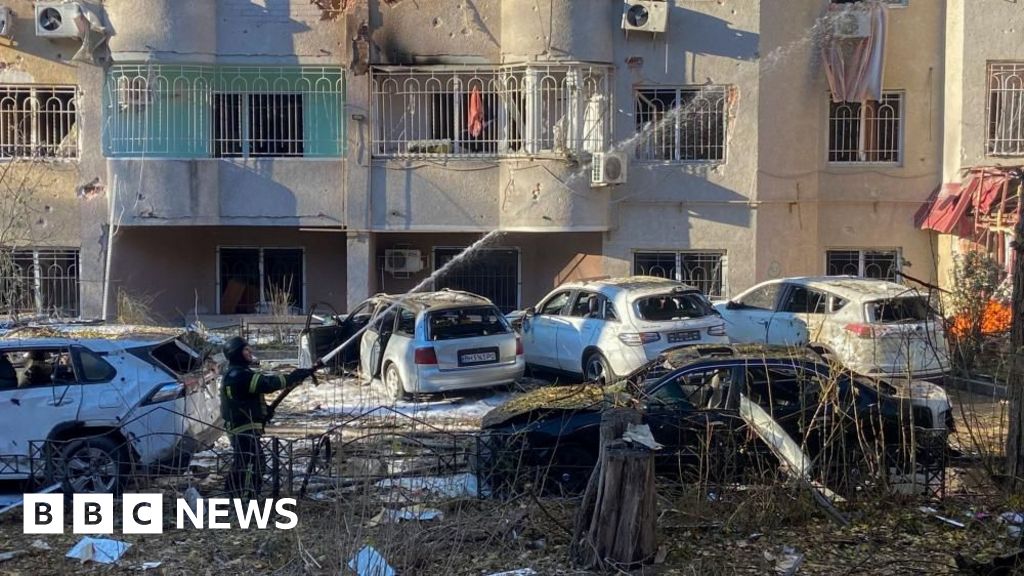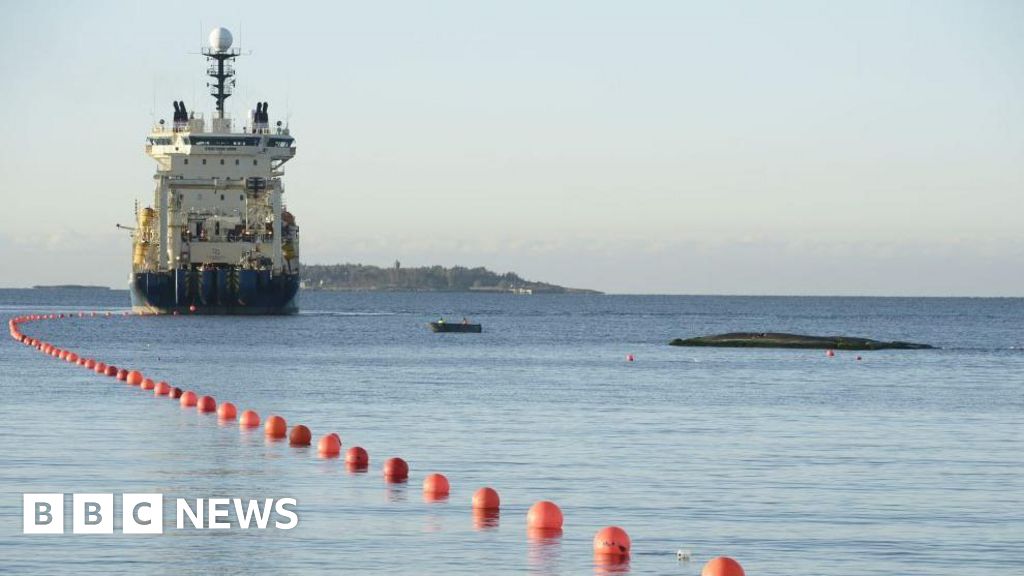ARTICLE AD BOX
 Image source, EPA-EFE/REX/Shutterstock
Image source, EPA-EFE/REX/Shutterstock
Residents in Mykolaiv say they have to queue for more than three hours for clean water
By Viktoriia Zhuhan & Nader Ibrahim
BBC News
For six months, homes in Ukraine's southern coastal city of Mykolaiv have been without clean drinking water.
Military and UN experts have told a BBC investigation they believe Russian forces deliberately cut off the water supply last April.
Satellite imagery and data suggest the pipeline to the city was deliberately destroyed while under Russian control.
Destroying resources vital for civilian life is widely regarded as violations of international humanitarian law.
But in recent weeks Russia has further targeted Ukraine's power and water infrastructure, prompting shortages across the country.
Queuing in the street in Mykolaiv to collect clean drinking water is dangerous as the city is close to the front line and is often shelled. Since Russia's invasion it has remained under Ukrainian control.
"You are standing in line. It's terribly scary to go out, God forbid something will fly in now," says Anya, a 36-year-old mother who fled to Mykolaiv from the neighbouring Kherson region under Russian occupation.
In Mykolaiv, locals like Anya can collect up to 20 litres of clean water a day at distribution points
Residents like Anya, who also cares for four other members of her family, do have access to what is called technical water in their homes, but it can't be used for drinking or cooking.
Even washing in it inflames their skin. "It is really very salty. It has a brown, greenish colour," she says.
These are the conditions that residents have had to endure for six months after the water supply to the city was cut off.
Evidence collected by the BBC points to this being a deliberate act by Russian forces.
Water pipeline destroyed
Image source, UGC
Image caption,These photos appear to show damage caused to Mykolaiv's water supply pipeline
In April this year, a Ukrainian news outlet published the above images which it says show damage caused by Russian forces to Mykolaiv's only water supply pipeline.
The BBC has analysed satellite and social media pictures which back up this claim.
We obtained the satellite image below, which multiple sources confirm shows the same location as the Ukrainian news outlet's photos.
It reveals that the pipeline was damaged at its most fragile point - where it comes to the surface from beneath the ground.
A source in Mykolaiv told the BBC that the pipeline had leaked for around eight hours after it was broken on 12 April, losing an estimated 40 million litres of water, before the supply to it was cut off.
Analysis of the topography of the area indicates the water from the leak should have flowed south of the pipeline.
The below image, from the messaging app Telegram and geolocated by the BBC, confirms that an area in the path of the expected flooding was indeed saturated by a huge amount of water.
This image found on social media shows flooding south of the damaged pipe
As well as confirming that this section of the pipeline was damaged, the BBC has also found satellite images showing Russian forces near by.
Four tanks can be seen close to the pipe in the image below, at time when the governor of Mykolaiv, Vitaly Kim, confirmed to the BBC that the area was under Russian control. He says plans had been made to repair the pipeline but they couldn't go ahead as it was "an active military position".
The BBC also met Dmytro Butrii, who was at the time the exiled governor of the Kherson region, at a secret location. He gave us more details about the attempts to repair the pipeline saying "there were negotiations [with the Russians] conducted by the authorities in Mykolaiv" but occupying forces "did not allow the repair team to access the site".
So if the pipeline was damaged, and Russian troops were in the area, was it deliberate?
Use of explosives
The BBC showed the satellite photos and the open source images of the pipe to a security expert to assess if it was damaged by random shelling or intentional sabotage.
Chris Cobb Smith, a military forensics expert who served in the British Army as an artillery officer for over 20 years and spent three years as a UN weapons inspector in Iraq, said: "The chance that this was the result of one stray round is infinitesimal, and extremely unlikely that it was a result of an intended indirect fire strike."
He doesn't believe it was caused by shells fired by tanks, as there are no tell-tale craters nearby.
"I believe the destruction was caused by the intentional placement of an explosive charge either directly under the pipe or possibly on top of it, at the most vulnerable point."
The BBC also showed the images to Michael Whelan, a security expert who served in the British military for over 20 years. He agrees that the damage to the pipeline was deliberately caused by explosives.
Further damage
The pipeline appears to have been damaged in a second area
Whilst in Mykolaiv, the BBC was given an exclusive image (above) showing a second, unreported, section of the pipeline which had been damaged.
The photograph has been geolocated confirming that another part of the pipe has been cut and that satellite images from the area show that military vehicles were nearby at a time when the area was under Russian control.
'A violation of humanitarian law'
That two separate points on the same pipeline have been damaged in ways that are consistent with sabotage points to occupying Russian forces deliberately cutting off the water supply to Mykolaiv.
The BBC shared its evidence with experts to assess the legality of such a move.
A UN expert, speaking anonymously because of having no authorisation to talk publicly on the subject, says the Mykolaiv water pipeline would be classified within the specially protected category of "objects indispensable to the survival of the civilian population" under international humanitarian law, making any sabotage of it illegal.
Marco Sassòli, professor of humanitarian law at Geneva University, who was part of the OSCE Moscow Mechanism mission of experts sent to Ukraine to report on humanitarian violations following the Russian invasion, agrees: "This certainly shows a violation of international humanitarian law. Destruction of objects indispensable to the survival of the civilian population is prohibited."
The Russian Ministry of Defence has not responded to the BBC's request for comment on what happened.
A city still suffering
The front line close to the damaged pipeline has shifted back and forth following Ukraine's recent counterattack against Russian forces, giving hope to people in Mykolaiv that the pipeline might soon be repaired.
But weeks after the offensive started, and with winter approaching, the BBC visited the city again, where we met elderly people who were still queuing for clean water and humanitarian aid.
Despite the risk of shelling, many residents in Mykolaiv continue to queue for water and humanitarian aid
Authorities in Mykolaiv say the area close to the pipeline needs to be safe from Russian artillery strikes and de-mined before the engineers can fix the damaged sections.
It's not clear when this might happen, and when the city's residents will get clean running water in their homes again.
Designed by Erwan Rivault and Becky Dale
Open source analysis by Sergio Voulker from SOAR.Earth, Rollo Collins and Wim Zwijnenburg
Edited by Peter Ball and Claire Press

 2 years ago
52
2 years ago
52








 English (US)
English (US)